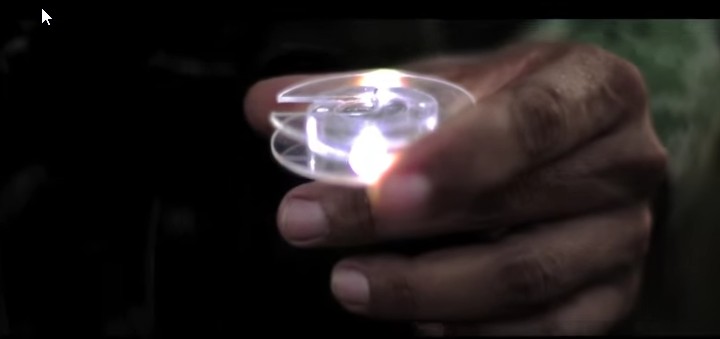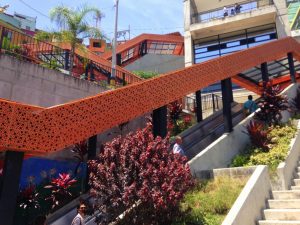How Creativity Rescued a Nation
The TV program 60 Minutes ran a segment last week that made my heart sing. It was the story an ad agency in the South American country of Colombia that used creativity to help end a 52-year-long war between the military and rebel guerilla fighters. The conflict

had cost the country 220,000 lives, but now it is effectively over. Due in large part to a brilliantly creative advertising campaign, 18,000 rebel fighters came out of the jungle over an 8 year period, laid down their guns and rejoined society.
This reverse revolution began when, at the request of the Colombian government, advertising guru Jose Miguel Sokoloff developed a number of innovative advertising campaigns aimed at convincing the guerillas that it was time to stop fighting and come home. Sokoloff’s agency and the military covered jungle trees in motion activated Christmas lights that lit up when the fighters walked by, floated glowing balls filled with gifts down the river to rebel strongholds, dropped player-signed soccer balls from the air with stickers saying “Demobilize and let’s play again”, and put signs all over the jungle inviting the rebels to come home and start life over.
The country, which had been at war the entire lifespan of most of its adults, and was known for horrendous drug cartel murders—6,000 a year in the town of Medellin alone— is now at peace and prospering. The culture has completely shifted, and it only happened when seemingly insurmountable problems were addressed with creativity, imagination and beauty. It’s an extreme example of caring for and regenerating a culture.

The main lesson to be taken from this marvelous renovation of a nation is how Sokoloff and his team–as well as other leaders in the country–effectively found ways to connect with the people they desperately needed to reach; the rebel fighters living hidden in a vast jungle.
I think that observing how they did it can help you and I connect with the people and the culture we hope to reach.
Here are 10 keys gleaned from this remarkable story:
- Be Authentic—Sokoloff and his team first created dramatic short films and commercials using actors to try to persuade the guerilla fighters to lay down their arms, but the campaign flopped. There was zero response from the rebels because everyone knew the stories and actors weren’t real.
- Know Your Audience- It wasn’t until Sokoloff and this team did extensive interviews with former guerillas and listened to their real stories that they discovered what really connected with them. The common sentiment was that they felt trapped in their role, unable to leave and–if they did leave–unable to return home.
- Appeal to Heart’s Desires—Many of these guerillas were tired and just wanted to come home. the ad team brought a little bit of home to them in the form of pictures and messages from their mothers hung along trails, Christmas lights on jungle trees, gifts and letters floated down the river, and an open invitation come back to a peaceful life.
- Appeal to Passions that Unite—All Colombians love soccer; in fact the guerrillas were known to stop fighting when a big match was on. The team tapped into this shared passion to foster a sense of unity between the rebels and the population. They dropped player-signed soccer balls into the jungle, inviting the rebels to come home and play, and encouraged the

Photo: MullenLowe.com people of the city to symbolically save a seat for a guerilla to watch a soccer match with them.
- Discover how to Reach Your Audience—The guerrillas lived in 150,000 square miles of tropical forest, so they were very difficult to reach. The military and agency teams posted signs and stickers around traveled trails and near encampments, and used the rivers–the main avenue of transportation and communication in the jungle—to send friendly messages and gifts in glow-in-the-dark capsules floating with the current into rebel territory.
- Show the Way—Fearing that some of the rebels wouldn’t know the way back home even if they wanted to give up, Sokoloff and the team developed “Operation Bethlehem”, a campaign of lights to actually show the guerillas the way out of the jungle. They used thousands of LED lights to mark paths, distributing them on foot and from helicopters. Then they shot giant searchlights up from points in the cities. The message was clear; “Follow the light to a new life”.
- Don’t Give Up—This process took years and many creative efforts to win the trust of the guerillas. But the trickle of those who responded grew to hundreds during successful campaigns.
- Foster Forgiveness—Many of these rebels had done terrible things. The good people of Colombia had to be willing to forgive them in the name of peace. The ad campaigns got the average person involved by distributing stickers and encouraging them to put them on seats that they would offer to any rebel who laid down their arms and returned.
- Provide the Most Beautiful Things for the Poorest People– As the guerillas stopped fighting, other aspects of the

Photo: Democracyspeaks.com creative rejuvenation of Colombia were developing. The Mayor of Medellin, once a notorious murder capital, recognized that his city was divided and the slums were bastions of despair and violence. He decided to build beautiful buildings in the center of the worst areas as a way to create dignity among the residents and give people from other areas a reason to come there.
- Connect Mentally and Physically— In order for his plan to work, the Medellin Mayor had to make the slums–isolated on steep mountainsides–more accessible. He decided to build escalators on the sides of those mountains—beautiful, artistic, colorful escalators the equivalent of 28 stories tall– so people could easily get to the area. And he installed cable car lifts from the mountain to the city so that workers could access more jobs and tourists could freely visit. In the process of he made Medellin a prime example of Andy Crouch’s maxim that the only way to change culture is to create culture.
Dostoevsky wrote that “beauty will save the world”. The South American country of Colombia–rescued from over 50 years of war through innovation, creativity, imagination and beauty–is one part of the world that’s proving that to be true.
Watch the 60 Minutes story here: http://www.cbsnews.com/videos/the-new-colombia/
J. Scott McElroy is the author of Finding Divine Inspiration (Destiny Image) and The Creative Church Handbook: Releasing the Power of the Arts in Your Congregation (InterVarsity Press). He directs The New Renaissance Arts Movement and blogs at JScottMcElroy.com. Reach him at Scott(at)TheNewR.org

linda sylvester
Wonderful! Thanks for this. Merry Christmas to you and your family.
Linda Sylvester